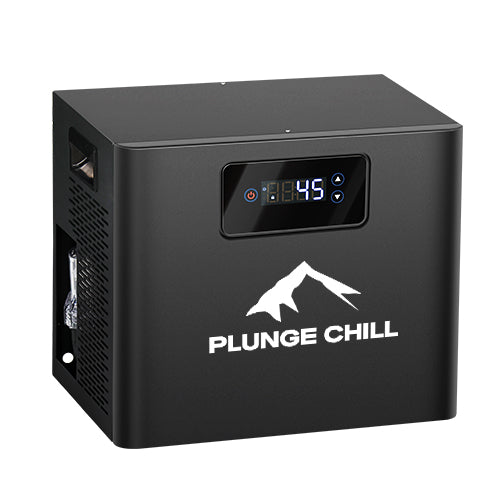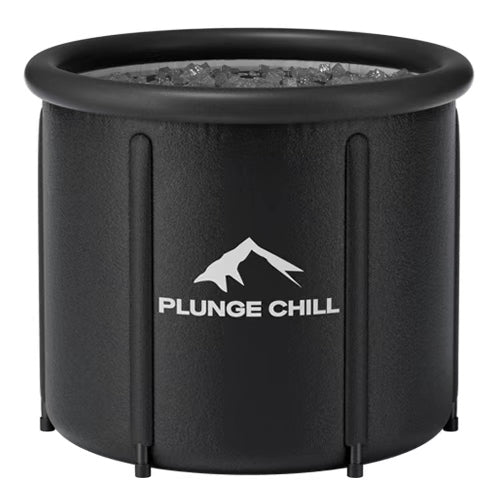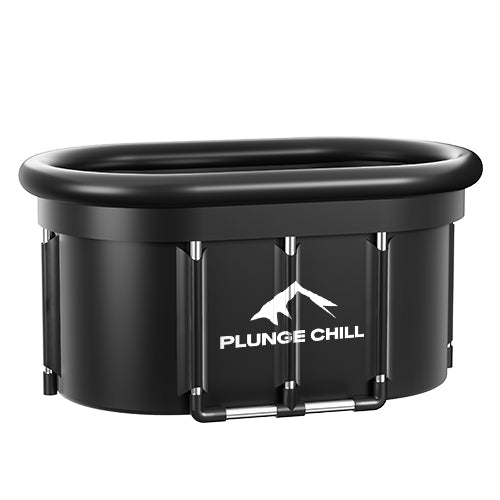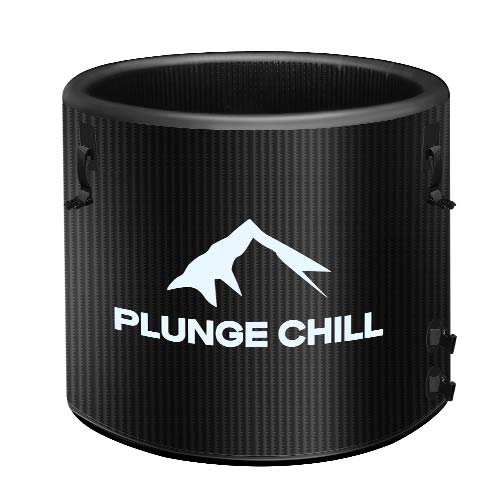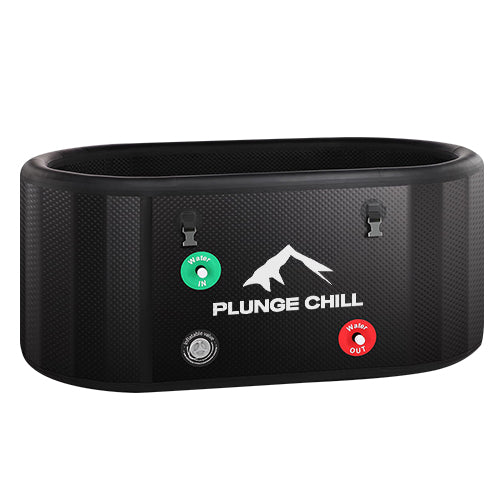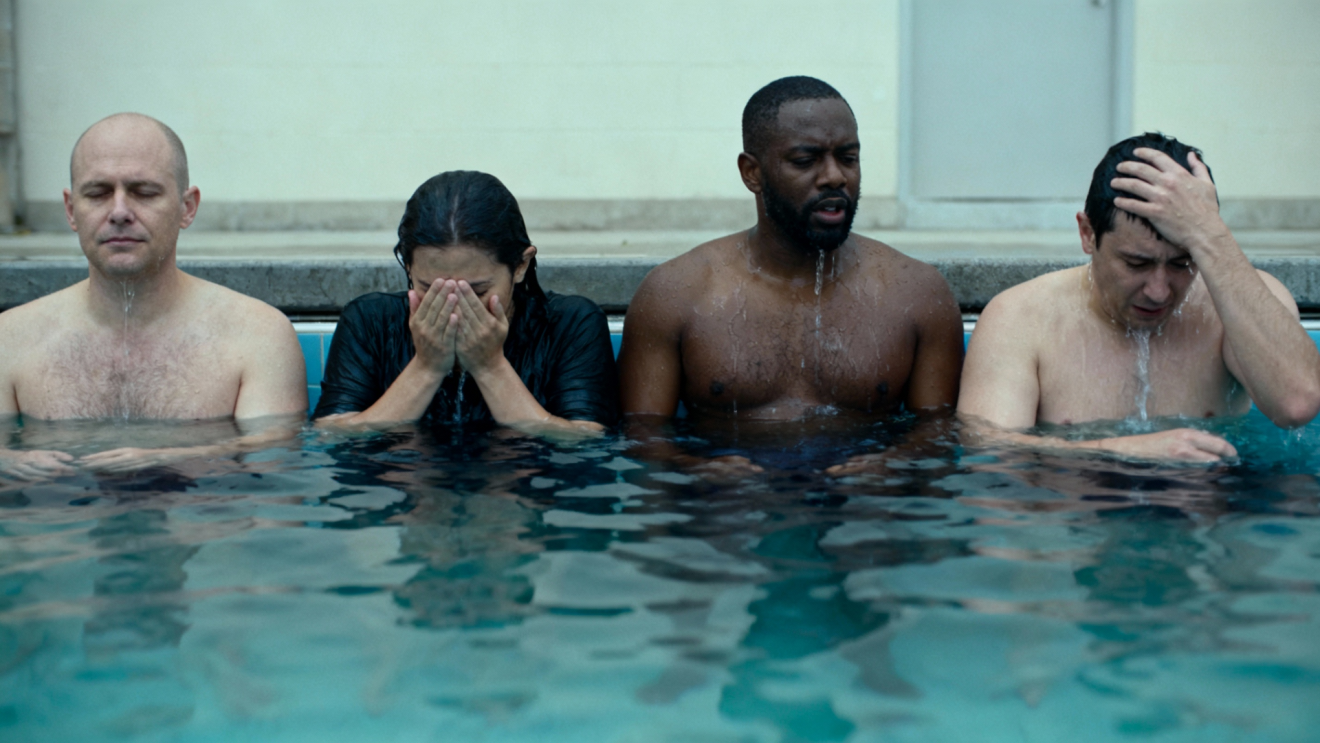Cold water immersion has surged from locker rooms to living rooms, promising sharper focus, faster recovery, and a stronger immune system. Yet anyone who has stepped into a frigid tub knows the experience is intensely personal. Some emerge energized; others feel shaky or simply underwhelmed. As an editor who tests cold‑water setups, tracks temperatures with lab thermometers, and, yes, has learned to control that first gasp, I’ve seen how different bodies and goals shape the outcome. This article unpacks why responses vary, what reputable evidence does and does not support, and how to tailor protocols safely. Along the way, I’ll include practical buying and care guidance, plus a jewelry‑specific note for readers who wear rings and gemstones in daily life.
What Counts as a “Cold Water Bath” (and What Doesn’t)
Cold water immersion, also called cold plunging or ice baths, generally means submerging the body in water at or below about 59°F, most often to the chest or shoulders, for short periods. Showers with only cold water deliver colder sensation on the skin but less uniform cooling of the core. Whole‑body cryotherapy, by contrast, is not water at all; it is a chamber of extremely cold air down to roughly −200°F for two to three minutes. University and hospital sources consistently note that a plunge or chest‑deep bath cools the body more effectively than a shower, while cryotherapy delivers a distinct, fast surface chill without the hydrostatic pressure you get in water.

Why Your Cold Plunge Feels Different Than Mine
The cold shock response and breath control
The first seconds in cold water trigger an autonomic “cold shock” response: heart rate, breathing, and blood pressure spike, and skin blood vessels constrict as the body shunts warm blood toward vital organs. Physiologists at Case Western Reserve University describe these rapid changes and emphasize that the initial breath‑control challenge is the riskiest moment. People differ in how forcefully this reflex fires and how quickly it subsides. Breath preparation and entering gradually can tame the early gasp for many, while others need multiple exposures to adapt.
Body composition, brown fat, and shivering
Shivering is a powerful, involuntary muscle activity that raises glucose uptake and insulin sensitivity, boosting energy expenditure for minutes after exposure. Some individuals also recruit brown adipose tissue to generate heat without shivering; however, reviews in psychiatric and metabolic literature suggest brown fat is sparse in many adults and contributes only a small fraction of daily energy burn. Leaner people may feel colder, sooner, but acclimated winter swimmers often report easier entries over time. These biological levers vary markedly between people and help explain why a given temperature feels mild to one person and punishing to another.
Training status and goal trade‑offs
The same ice bath can be a friend to an endurance athlete between back‑to‑back sessions and a foe to a lifter chasing muscle growth. Sports medicine summaries from academic centers and journals report that post‑exercise cold reduces soreness and perceived fatigue yet can dampen molecular signals for hypertrophy and strength if used routinely after resistance training. Endurance adaptations appear less affected, and in some contexts muscle cooling may reinforce mitochondrial signaling. Experienced coaches increasingly time cold exposure around workloads rather than applying it reflexively after every session.
Sex, age, genetics, and nervous system wiring
A Journal of Thermal Biology review and Harvard‑affiliated commentary note that cold exposure can boost parasympathetic activity and heart rate variability, with modest short‑term psychological benefits in some studies. A PLOS One analysis reported stress reductions that emerged hours later. One intriguing note from Harvard Health’s reporting on pooled data is that sleep improvements after cold exposure were more evident in men than women in certain trials, underscoring that sex differences may shape perceived benefits. On the sensory side, cold‑sensing receptors in skin are denser than warm receptors, and TRPM8 ion channels that detect cold can differ in responsiveness with age and physiology, further shifting the felt impact.
Medications, conditions, and risk tolerance
Cleveland Clinic and university sources flag elevated risk for people with heart disease, arrhythmias, prior stroke, uncontrolled hypertension, Raynaud’s phenomenon, peripheral neuropathy, diabetes, or poor circulation. Beta blockers blunt heart‑rate responses and may mask warning signs. In these cases the same water that feels invigorating to a healthy adult can precipitate dizziness, arrhythmias, or dangerous spikes in blood pressure. Medical clearance is prudent before starting, and for some, cold plunging is simply not advisable.
Dose, depth, and water conditions
A shower at 55°F for two minutes does not equal a chest‑deep still bath at the same temperature, and neither equals a windy lake in winter. Immersion depth increases hydrostatic pressure, which shifts fluid into the vascular space and alters cardiac preload and output. Agitated water pulls heat faster than still water. Small adjustments in temperature, time, and depth can produce disproportionately large differences in physiological load, which is why conservative, stepwise progression is a recurring theme in clinical guidance.
Expectation and social context
Expectancy effects are not hand‑waving. Experiments that compared true cold immersion with a cleverly designed warm‑water “sham” condition found that what people believed about recovery influenced outcomes. Social rituals—group plunges, post‑plunge sauna—also shift mood and motivation. That does not make the practice ineffective; it means psychology can amplify or blunt the experience, adding another layer of individuality.

What Strong Evidence Does—and Does Not—Show
Large, high‑quality randomized trials are still comparatively rare for the general population. A PLOS One systematic review and meta‑analysis of randomized trials in healthy adults, totaling more than three thousand participants, reported a pattern that helps interpret mixed anecdotes. Cold immersion acutely increased inflammatory markers for an hour, reduced perceived stress about half a day later, and showed promising but inconsistent signals for sleep and quality of life, with no consistent improvement in mood or robust short‑term immune changes. A common real‑world finding—less soreness immediately after cold—aligns with meta‑analyses showing reductions in delayed‑onset muscle soreness and perceived exertion close to the exposure, with effects fading at the one‑ to two‑day marks for many outcomes. Meanwhile, multiple studies in sports physiology and guidance from schools of medicine caution that routine cold plunging after lifting can blunt long‑term hypertrophy and strength gains. On cardiovascular resilience, reviews find increases in parasympathetic activity and heart rate variability after cold or cryostimulation, but emphasize that such metrics do not yet translate into proven reductions in cardiac events.
Hospital and university sources consistently stress the limits of current evidence and urge moderation. Cleveland Clinic, Mayo Clinic Press, University of Utah Health, and Ohio State University all note rising popularity but mixed research, with strongest support for short‑term soreness relief, a believable thermoregulatory cooling effect after exertion, and immediate alertness or mood lift that may be supported by catecholamine release and group dynamics.
Practical Protocols That Respect Individuality
Competing advice online can feel contradictory because it comes from different contexts. Sports medicine physicians advising a first‑timer emphasize brevity and comfortable temperatures; performance centers working with acclimated athletes sometimes use colder or longer exposures under supervision.
|
Publisher/Center |
Typical Temperature Guidance |
Typical Duration Guidance |
Key Notes and Caveats |
|
Cleveland Clinic |
Begin near 68°F for newcomers; common range 50–59°F; advanced users sometimes 39–50°F; avoid below ~ 40°F |
Start around three minutes; cap near five minutes as a general safety ceiling |
“Start low and go slow”; use a thermometer; optional sauna for 15–30 minutes afterward to re‑warm |
|
University of Utah Health |
Beginners often use 50–59°F |
Usually under two to three minutes for novices; build gradually only if well‑tolerated |
Never plunge alone; avoid alcohol; prepare warm clothing and a rewarming plan |
|
Ohio State University |
Many athletic protocols use 50–59°F |
Ten to twenty minutes appears in research and practice for endurance recovery; adjust based on tolerance |
If building muscle size or strength, delay cold 24–48 hours post‑training to avoid blunting adaptations |
|
Temple Health |
Typically 50–60°F for brief full‑body submersion |
First sessions of thirty to sixty seconds; with acclimation, work toward five to ten minutes; not colder than ~40°F |
Rewarm promptly with drying, clothing, and light movement |
|
Mayo Clinic Health System |
Short submersion in very cold water; home practice preferred over risky open water |
Build from thirty to sixty seconds toward five to ten minutes as desired and tolerated |
Daily plunges may blunt performance adaptations if done after strength work; high‑end tanks can cost up to the tens of thousands of dollars |
These ranges are not a mandate. The safest path for most beginners is to start warmer and shorter, learn breath control, measure temperature with a reliable thermometer, and increase only one variable at a time. For lifters in a strength or hypertrophy block, a pragmatic compromise is to reserve cold exposure for off‑days, taper weeks, endurance work, or competitions with tight turnarounds. For people with cardiovascular or neurological risk, clearance from a clinician who understands your history matters more than any generic online rule.
Pros, Cons, and Who Should Be Cautious
The clearest upside is rapid symptom relief: constricted blood vessels and lower tissue temperatures can reduce swelling, tame nociceptive signaling, and make sore muscles feel better within minutes. Cold also cools an overheated core quickly after exertion, which is why marathon medical tents keep ice baths for heat illness. Many report a pronounced mental reset, plausibly linked to surges in norepinephrine and related neurotransmitters, with functional MRI work suggesting transient re‑wiring across attention and salience networks after a short immersion near 68℉.
On the downside, cold shock can provoke dangerous hyperventilation, involuntary gasping, and sharp spikes in blood pressure. Extended exposure can impair nerve function and, in extreme conditions, progress to hypothermia or frostbite. Perhaps the most subtle trade‑off is the training signal: some inflammation and heat are part of how the body adapts to strength training, and repeatedly suppressing those early signals with cold can mute desired gains. Several institutions explicitly advise caution or avoidance for people with heart disease, arrhythmias, a history of stroke, uncontrolled hypertension, Raynaud’s, peripheral neuropathy, diabetes, cold agglutinin disease, or poor circulation. Harvard‑affiliated cardiology voices emphasize that those with rhythm disorders should not plunge.
Open water adds special risk: currents, ice edges, cold air wind chill, and slippery exits complicate what would be a manageable exposure in a home tub. Across sources, the common sense guidance is to avoid solitary plunges, step in and out slowly, keep the head above water, dry off quickly, and rewarm gradually with light movement and warm fluids instead of jumping directly into a scalding shower if you feel dizzy.

Factors That Change Your Response (and How to Adjust)
|
Factor |
Why It Matters |
How to Adjust Responsibly |
|
Health status and medications |
Cardiovascular and neurological conditions raise risk; beta blockers alter heart‑rate feedback |
Seek medical clearance; favor milder temperatures and shorter durations; consider skipping entirely if advised |
|
Training goal |
Cold reduces soreness but can blunt hypertrophy and strength adaptations if routine post‑lift |
Delay cold 24–48 hours after heavy lifting; use strategically for endurance or heat recovery |
|
Acclimation level |
Habituation tempers the cold shock response over weeks |
Start warmer and shorter; add time or reduce temperature slowly, not both at once |
|
Immersion depth and water movement |
Chest‑deep, moving water pulls heat faster than a cool shower |
Keep head out; begin at waist or chest depth in still water; confirm temperature with a thermometer |
|
Sex, age, and body composition |
Sleep and mood effects differ across groups; leaner bodies may chill faster |
Adjust dose conservatively; pay attention to shivering, numbness, or dizziness as stop signals |
Equipment Care and Buying Tips
A tub is only part of a safe, sustainable setup. Several medical sources recommend a thermometer to confirm water temperature rather than guessing with ice bags. In my own testing, inexpensive aquarium and kitchen thermometers can be off by several degrees; dedicated digital probes tend to be more accurate and easier to read. Choose a vessel you can enter and exit without slipping, and plan a rewarming zone with towels and warm clothing within arm’s reach. Decide how you will keep the water clean. Portable hard‑shell or inflatable plunge tubs are simple but require regular draining and cleaning; filtered and chilled systems offer precise control and sanitation at a higher price, with Mayo Clinic Health System noting that premium tanks can reach very high price points. If you add a powered chiller, confirm proper electrical protection and avoid extension cords around water; this is practical safety advice rather than a medical claim and reflects general household electrical best practices (inference, high confidence). For home hygiene, establish a cleaning schedule with products compatible with your tub’s materials to minimize biofilm; this is common sense facility care (inference, medium confidence).
Temple Health and Cleveland Clinic advise measuring the water and adjusting one variable at a time, which aligns with real‑world best practice. If you use open water, avoid strong currents, know your exit points, and never go alone.
A Jewelry‑Specific Note Before You Plunge
Cold causes fingers to shrink slightly and water reduces friction. In daily life that is why rings can slip unexpectedly under cold running water. While not addressed in the clinical sources above, my first‑hand experience as a jewelry editor suggests removing rings, bracelets, and necklaces before immersion to prevent loss in a tub drain or, worse, in open water (inference, high confidence). Some porous or delicate gemstones and organic materials dislike abrupt temperature swings; they can be more vulnerable to damage when moved quickly between hot and cold environments (inference, moderate confidence). Stowing jewelry in a small tray near your rewarming setup is a simple habit that protects both your pieces and your fingers.
Evidence‑Aware Ways to Start
Newcomers do best with warm‑cold transitions that respect the cold shock reflex. Clinical and sports medicine sources repeatedly recommend beginning with very short exposures—think on the order of tens of seconds to a few minutes—at comfortable, measured temperatures around the low teens Celsius, and building only if your body tolerates the dose without undue shivering, numbness, or breathlessness. Keep your head above water. Focus on slow nasal inhalations and longer exhalations during the first thirty seconds. Step out as soon as discomfort moves beyond the expected cold and you feel dizzy or confused. Dry off, add layers, and move gently rather than rushing to scalding water if you feel light‑headed. If you already have a training plan, decide when cold helps your actual goal rather than adopting a one‑size‑fits‑all ritual. If your priority is maximal strength or muscle size, treat cold plunges like a garnish, not the entrée.
Takeaway
Cold water immersion can feel transformative, but it is not magic. The strongest evidence supports short‑term reductions in soreness, a reliable cooling effect after exertion, and a brief mental lift. Benefits for stress appear with a time lag, and immune effects remain uncertain. Risks rise with cardiovascular disease and unsupervised open water. The variability you see among enthusiasts has physiological, psychological, and situational roots: different bodies, different goals, different doses. Measure your water, respect your health history, and adjust your approach to your purpose. If you wear rings, take them off first.
FAQ
How cold should the water be if I’m just starting?
Hospitals and sports medicine clinics commonly suggest beginning near the upper end of the “cold” range, roughly 50–59℉ or even warmer for the first attempts, and keeping initial exposures very brief. Use a thermometer rather than guessing, and increase cold or time gradually, not both at once.
Will cold plunges help me build more muscle?
For strength and hypertrophy, routine post‑lift immersion can blunt long‑term gains by damping the signals your body uses to adapt. If muscle size and strength are your top priorities, reserve cold for rest days, endurance blocks, or competition turnarounds. This trade‑off is a consistent theme in reports from university sports medicine groups and Mayo Clinic Press.
Can cold plunges boost immunity?
A widely shared workplace shower study associated brief cold finishes with fewer sick days, and a recent meta‑analysis found time‑dependent patterns for stress and inflammation. However, immediate immune boosts were not consistent, and mechanisms remain unclear. Consider cold immersion an optional adjunct to sleep, nutrition, and vaccination rather than a primary immune therapy.
Are cold showers good enough, or do I need a tub?
Showers provide an accessible starting point and can feel invigorating, but they cool less uniformly than chest‑deep immersion. For recovery after endurance work or heat stress, a bath or plunge more effectively lowers core temperature. For mood and arousal, both can feel helpful; choose based on safety, access, and your goal.
Is it safe to combine a plunge with a sauna?
Alternating heat and cold is common in wellness settings. Cleveland Clinic notes that fifteen to thirty minutes of sauna after a short plunge can help rewarm. If you have cardiovascular risks, get medical clearance first, stand up slowly between transitions, and avoid competing extremes of duration or temperature.
Should I remove my jewelry before immersion?
Yes. Cold makes fingers slimmer and water reduces friction, which increases the chance of a ring slipping off unnoticed, especially in open water. This is practical, experience‑based advice rather than a clinical directive; placing jewelry in a designated tray before you plunge is a small precaution that avoids a big headache.
References
- https://knightcampus.uoregon.edu/plumbing-benefits-plunging
- https://case.edu/news/science-behind-ice-baths-and-polar-plunges-are-they-truly-beneficial
- https://www.health.harvard.edu/heart-health/cold-plunges-healthy-or-harmful-for-your-heart
- https://pubmed.ncbi.nlm.nih.gov/39879231/
- https://health.osu.edu/wellness/exercise-and-nutrition/do-ice-baths-help-workout-recovery
- https://healthcare.utah.edu/healthfeed/2023/03/cold-plunging-and-impact-your-health
- https://health.clevelandclinic.org/what-to-know-about-cold-plunges
- https://journals.plos.org/plosone/article?id=10.1371/journal.pone.0317615
- https://mcpress.mayoclinic.org/healthy-aging/the-science-behind-ice-baths-for-recovery/
- https://www.mayoclinichealthsystem.org/hometown-health/speaking-of-health/cold-plunge-after-workouts
Disclaimer
By reading this article, you acknowledge that you are responsible for your own health and safety.
The views and opinions expressed herein are based on the author's professional expertise (DPT, CSCS) and cited sources, but are not a guarantee of outcome. If you have a pre-existing health condition, are pregnant, or have any concerns about using cold water therapy, consult with your physician before starting any new regimen.
Reliance on any information provided in this article is solely at your own risk.
Always seek the advice of a qualified healthcare provider with any questions you may have regarding a medical condition, lifestyle changes, or the use of cold water immersion. Never disregard professional medical advice or delay in seeking it because of something you have read in this article.
The information provided in this blog post, "Understanding Why Cold Water Bath Effects Vary Among Individuals," is for informational and educational purposes only. It is not intended to be a substitute for professional medical advice, diagnosis, or treatment.
General Health Information & No Medical Advice
